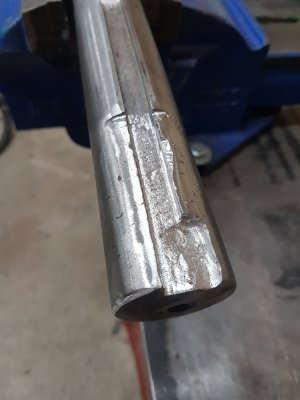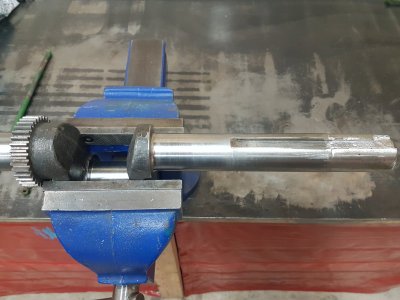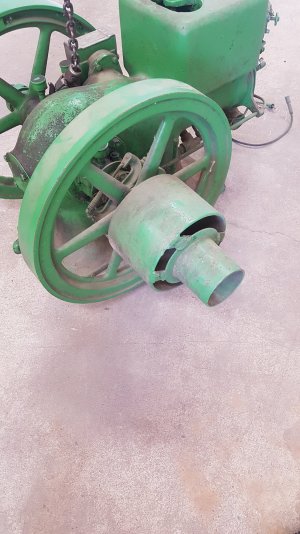Proxule
Ultra Member
Howdy folks,
I am rebuilding a little some thing I picked up a wile ago. I wont share just yet because I am right in the middle of things. What I can say is this shaft is 95 years old!
It is a single cylinder and the shaft on the driven side is worn down about .015 from the original dimension, the keyway is also wallowed out.
I am deathly scared of using heat. I normally would whip up the old smokey and weld the shit out of her, But this isn't a part I can source, If and or when I do screw it up.
Or Braze it, low fuming braze temps are around 900C
but again - High enough to distort it bend it like banana!
For certain, This is a drop forged steel crank, I am 100% sure of this.
1. Braze weld
2. SMAW - aka old smokey
3. Turn down further for a total of .060-.0100 undersize and make a sleeve and use loctite 620 / 638
4. Turn down further for a total of .060-.0100 undersize and use Devcon Titanium putty ( I used this product a lot and is literally bomb proof stuff ).
5. Turn down further for a total of .060-.0100 undersize and make a sleeve and use high silver content braze ( 50% silver mix rod melts at about 650-700C )
6. Spray weld it - Not an option, The cost is very* prohibitive.
I cant just make a sleeve and leave it unsupported where the keyway is wallowed out. I need to address that at the same time as the undersize.
Any and all opinions appreciated and entertained.
Thanks
I am rebuilding a little some thing I picked up a wile ago. I wont share just yet because I am right in the middle of things. What I can say is this shaft is 95 years old!
It is a single cylinder and the shaft on the driven side is worn down about .015 from the original dimension, the keyway is also wallowed out.
I am deathly scared of using heat. I normally would whip up the old smokey and weld the shit out of her, But this isn't a part I can source, If and or when I do screw it up.
Or Braze it, low fuming braze temps are around 900C
but again - High enough to distort it bend it like banana!
For certain, This is a drop forged steel crank, I am 100% sure of this.
1. Braze weld
2. SMAW - aka old smokey
3. Turn down further for a total of .060-.0100 undersize and make a sleeve and use loctite 620 / 638
4. Turn down further for a total of .060-.0100 undersize and use Devcon Titanium putty ( I used this product a lot and is literally bomb proof stuff ).
5. Turn down further for a total of .060-.0100 undersize and make a sleeve and use high silver content braze ( 50% silver mix rod melts at about 650-700C )
6. Spray weld it - Not an option, The cost is very* prohibitive.
I cant just make a sleeve and leave it unsupported where the keyway is wallowed out. I need to address that at the same time as the undersize.
Any and all opinions appreciated and entertained.
Thanks
Attachments
Last edited:



